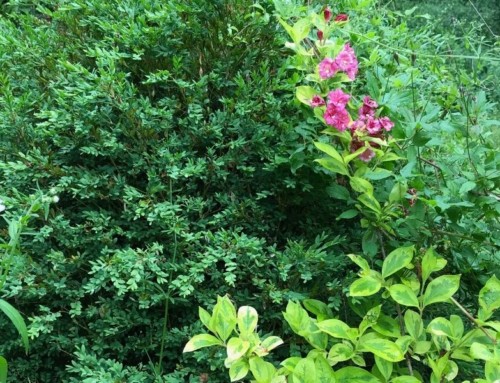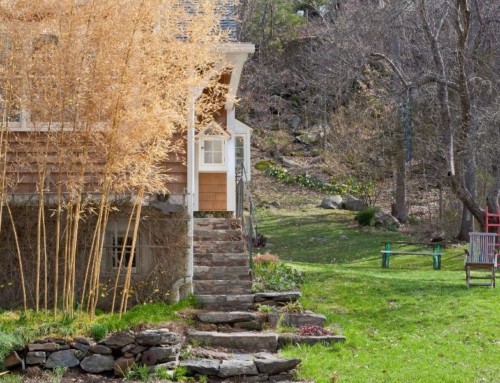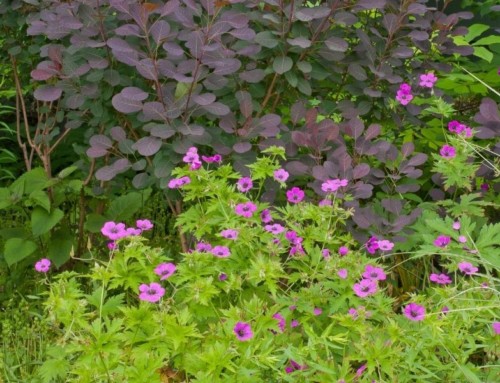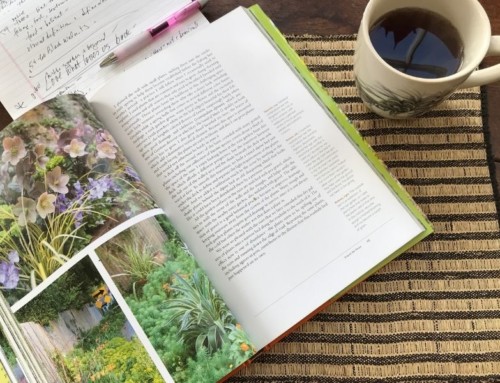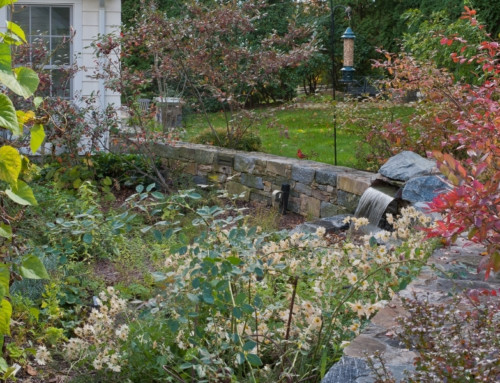I got out of the houseplant habit for a while.
Except for the odds and ends and amaryllis bulbs I grew in the greenhouse window over my kitchen sink, my windowsills were bare.
For years, I had enough creatures to take care of.
I put houseplants outdoors in summer and pretty much forgot about them – sometimes until after the first killing frost. Oops.
“Real plants” growing outside, in native habitats, are endlessly fascinating members of natural communities.
(Plus they get watered when it rains, are nourished by living soil and go dormant in winter).
Enticed by Exotics
Last January’s trip to Florida jogged some memories and got me thinking about indoor plants again.
In Florida’s climate, tropical houseplants thrived under palm trees and twined way up into the treetops.
There I was, eco-friendly, invasive-plant busting New Englander, going gaga over dense underplantings of boldly striped, exotic-looking snakeplants (Sansevieria trifasciata).
I remembered the one my grandmother had, centered on a lace doily on her tv, and recalled my attraction to them in Henri Rousseau’s jungle dreamscape painting Le Douanier.
Snakeplants are invasive in Florida. They create a dense underplanting because they choke out everything else.
Now I want one.
And I’ve realized that the inside of my house has habitats too.
As more and more plants find their way into my home, David Deardorff and Kathryn Wadsworth’s 2016 book, What’s Wrong with My Houseplant? Save Your Indoor Plants With 100% Organic Solutions is my guide.
Although the book has very good pest and disease troubleshooting guidance, I find the detailed information about optimum household environment for a wide range of houseplants most useful.
They write, “All houseplants originally came to us from native habitats where they had evolved and adapted to local environmental conditions for millions of years.”
Just like real plants.
“Most good houseplants are tropical,” they note, “adapted to warm nighttime temperatures and rainforest conditions.”
With energy conservation in mind, many of us keep our houses on the cool side, especially at night. (Unless you live in a city apartment, where the only way to turn down the heat in winter is to open a window).
I wear socks to bed in winter to keep warm at night. This house is definitely not a tropical paradise.
The dry air in sealed up heated and air-conditioned houses is a world away from tropical humidity. At least I keep windows open all summer.
And plants need different kinds of light – direct, filtered, low, medium, high – that our homes may or may not be able to provide. The authors explain it all.
Houseplants are not just decor. They have needs, just like pets.
So now, before falling for a beautiful plant, I try to determine whether my habits and habitats can meet its needs.
(Or more accurately, before buying a plant I’ve already fallen for).
My Different Home Habitats
Sun streams into my winterized front porch all day, low and full-force in winter.
No heat, just ambient air drifting in from the rest of the house. It’s the coldest room – except when I light the woodstove. Wood heat dries the air even more than blasts from my forced hot air heating system.
Not the kind of place the tropical maidenhair fern I yearn for would thrive.
Deardorff/Wadsworth on maidenhair ferns (Adiantum spp.): “Their demands are simple, but they are also uncompromising. Give them what they want or they’ll die. And what they want is high humidity, warmth and shade.”
Warmth, as in 75-85 degrees in the daytime, 65-75 degrees at night. I turn my heat up to 64 degrees in the morning.
But the lovely azalea topiary that has been blooming for over a month, set back from direct window light a bit, loves it there, and many succulents would do well.
The upstairs bath, with a northeast-facing window and steam from showers would be more agreeable to a maidenhair fern, if only I’d turn the heat up.
My office is especially well insulated and the door mostly stays shut, keeping the heat inside.
This room gets no direct light until mid-February. Then morning sun streams in through French doors, and afternoon sun slants through the northwest window, waking plants from their winter rest.
But until then, those French doors let in a lot of indirect light. The almost black-leafed begonia that was frying in my sunny greenhouse window is doing much better here.
And so far, it’s just the place for my new silver-splashed Chinese evergreen (Aglaonema ‘Cutlass’). This plant prefers low to medium light and is sensitive to cold air.
The authors suggest an east-facing window with curtains to filter the light for this plant. No way am I going to block views into the yard by putting up curtains.
It will let me know that it’s time to move it away from the window.
With no more four-footed critters to care for, the house has felt kind of lifeless sometimes.
But lately I’ve noticed that my plants welcome me home at the end of the day – just like pets.

